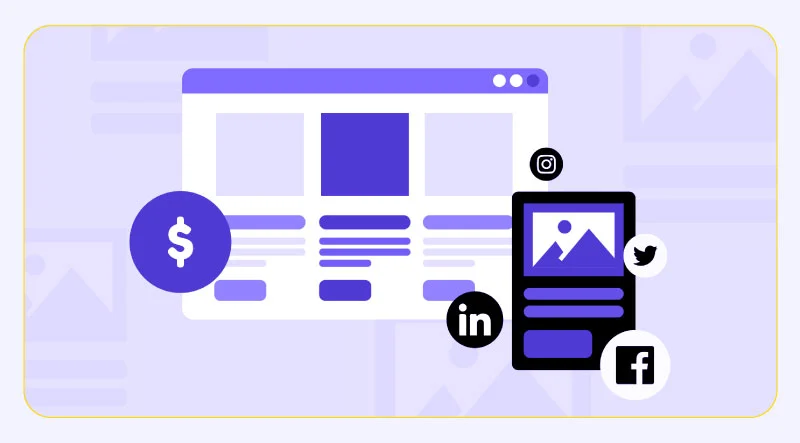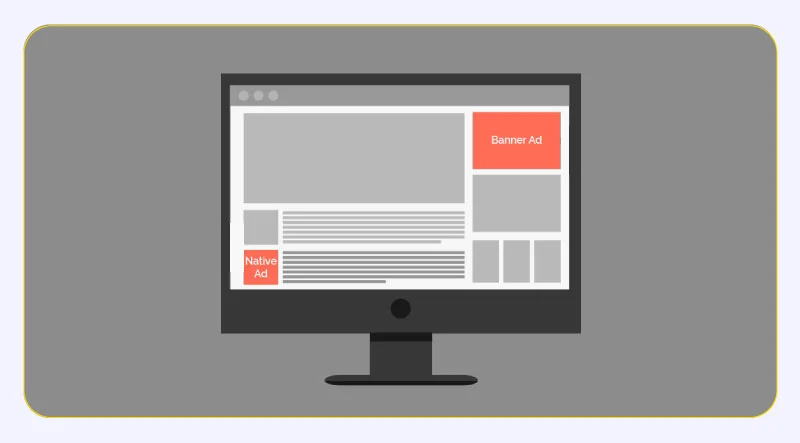As digital marketing continues to evolve, native advertising has become an increasingly popular and effective strategy for small businesses to reach their target audiences. Native advertising involves creating content that is designed to blend seamlessly with the surrounding content, providing a less intrusive and more engaging experience for the audience. In this article, “Native Advertising for Small Business,” we will explore the benefits of native advertising and how it can help small businesses thrive in today’s competitive market.

Native advertising has become a crucial component of digital marketing for small businesses due to its ability to increase engagement, build brand awareness, and drive conversions. By creating high-quality, relevant content that resonates with their audience, small businesses can establish themselves as thought leaders in their industry and build trust with their customers. In this article, we will discuss how small businesses can leverage native advertising to achieve their marketing goals.
We will also provide practical tips and Successful native advertising examples that small businesses can implement. From choosing the right platform to creating effective content, we will cover everything small businesses need to know to get started with native advertising. Whether you’re a small business owner looking to increase brand awareness or a marketer looking to help your clients succeed, this article on “Native Advertising for Small Business” is a must-read.
Benefits of Native Advertising for Small Businesses
Native advertising has become an increasingly popular advertising format among small businesses. Here are some of the key benefits of native advertising for small businesses:
- Cost-effective advertising: One of the biggest advantages of native advertising is its cost-effectiveness. Small businesses with limited budgets can create engaging native ads without breaking the bank.
- Enhanced user engagement: Native ads are designed to blend seamlessly with the content on a given platform, making them less intrusive and more likely to capture the attention of users. This results in increased engagement with the ads and ultimately drives more traffic to the business.
- Increased brand credibility: Native advertising allows small businesses to build trust and credibility with potential customers. By providing useful and relevant content in a non-intrusive way, businesses can establish themselves as experts in their field and build a loyal customer base.
- Better targeting of potential customers: Native advertising allows small businesses to target their ads to specific demographics and interests, ensuring that their message is seen by those who are most likely to be interested in their products or services.
- Increased ROI: Native advertising has been shown to deliver a higher return on investment compared to other forms of digital advertising. This is because native ads are more engaging and less intrusive, resulting in higher click-through rates and ultimately more conversions for the business.

By leveraging the benefits of native advertising, small businesses can effectively compete with larger brands and reach their target audience in a cost-effective and engaging way.
Types of Native Advertising
Small businesses have a variety of native advertising formats to choose from, each with its unique benefits and considerations. Here are some common types of native advertising:
- In-feed ads: In-feed ads appear in the user’s feed and match the style and tone of the surrounding content. These ads can include videos, images, or articles and are typically labeled as “sponsored” or “promoted.”
- Recommendation widgets: Recommendation widgets are ad units that appear at the bottom or side of a web page, offering links to related content. These ads are often labeled as “recommended” or “related articles.”
- Branded content: Branded content refers to articles, videos, or other types of content that are created to align with a brand’s message and style. This type of native advertising allows businesses to connect with their target audience in a more organic and authentic way.
- Sponsored listings: Sponsored listings appear at the top of search engine results pages (SERPs) and are designed to look like regular search results. These ads can be effective for small businesses looking to improve their visibility on search engines.
- Promoted search results: Promoted search results are similar to sponsored listings, but they appear at the bottom or side of search engine results pages. These ads can be a cost-effective way for small businesses to reach potential customers who are actively searching for products or services like theirs.

Choosing the right type of native advertising depends on a variety of factors, including business goals, target audience, and budget. Small businesses should carefully consider their options and test different formats to determine what works best for them.
Best Practices for Native Advertising for Small Businesses
Native advertising can be a valuable tool for small businesses, but it’s important to follow best practices to ensure that your ads are effective. Here are some tips to keep in mind:
- Identify your target audience: Before creating your ads, make sure you have a clear understanding of who your target audience is. This will help you create content that resonates with them and increases the chances of engagement.
- Choose the right platform for advertising: Different platforms have different audiences and content requirements. Choose a platform that aligns with your brand values and where your target audience is likely to be. Taboola and Outbrain are currently among the most popular native ad networks.
- Create engaging and informative content: Native advertising works best when the content is relevant, informative, and engaging. Create content that adds value to the user and encourages them to engage with your brand.

- Use images and videos to grab attention: Visual content is more attention-grabbing than plain text. Use high-quality images and videos to make your ads stand out.
- Ensure that the content aligns with your brand’s values and message: Your native advertising content should be consistent with your brand’s message and values. This helps build brand credibility and trust.
- Use appropriate call-to-action (CTA) to encourage engagement: Your ads should have a clear call-to-action that encourages users to take action. This could be signing up for a newsletter, downloading a free resource, or making a purchase.
- Monitor the performance of your ads and optimize them for better results: Keep track of the performance of your native ads and make adjustments as needed. This could include changing the ad copy, targeting, or platform to optimize for better results.
By following these best practices, small businesses can create effective native advertising campaigns that drive engagement, increase brand awareness, and ultimately, boost sales.
Challenges Faced by Small Businesses in Native Advertising
While native advertising can provide significant benefits for small businesses, there are also a number of challenges that they may face. These challenges include:
- Limited budget: Small businesses often have limited marketing budgets, which can make it difficult to compete with larger businesses for ad space and resources. However, with careful planning and targeting, small businesses can still achieve success with native advertising.
- Lack of expertise in creating native ads: Creating effective native ads requires a certain level of expertise and knowledge of the platform being used. Small businesses may not have the resources or experience needed to create high-quality ads that resonate with their target audience.
- Difficulty in measuring ROI: Measuring the return on investment (ROI) of native advertising can be challenging, especially for small businesses that may not have access to sophisticated analytics tools. It’s important for small businesses to set clear goals and metrics for their native advertising campaigns, and to track and analyze their results over time.
- Competition from larger businesses: Small businesses may find it difficult to compete with larger businesses for ad space and attention, especially on popular platforms like Facebook and Instagram. However, by focusing on their unique strengths and targeting specific niche audiences, small businesses can still find success with native advertising.

Despite the challenges, small businesses should not shy away from native advertising. Instead, they should focus on creating a unique value proposition that differentiates them from the competition. By doing so, they can create compelling native ads that resonate with their target audience and help build their brand’s credibility.
In conclusion, native advertising can be a game-changer for small businesses looking to increase their visibility, engagement, and ROI. By understanding the benefits, types, and best practices of native advertising, small businesses can create effective campaigns that capture the attention of their target audience and achieve their marketing objectives.
Conclusion
Native advertising for small businesses is an effective way to increase brand awareness, engage with potential customers, and drive sales. By using the right platform and following best practices, small businesses can achieve their marketing goals with limited resources. It’s important to create engaging and informative content that aligns with the brand’s values and message to increase credibility and customer trust.
In conclusion, native advertising for small businesses is a powerful tool that shouldn’t be overlooked. With the challenges that small businesses face, such as limited budget and lack of expertise, native advertising can level the playing field and help them compete with larger businesses. By following the best practices outlined in this article and continuously monitoring the performance of their ads, small businesses can achieve success and see a significant return on investment. Don’t miss out on the benefits of native advertising for small businesses – start exploring this advertising strategy today!
FAQs
How can native advertising benefit small businesses?
Native advertising can benefit small businesses by providing cost-effective advertising, enhancing user engagement, increasing brand credibility, better targeting potential customers, and increasing ROI.
What types of native advertising formats are available for small businesses?
Small businesses have various native advertising formats to choose from, including in-feed ads, recommendation widgets, branded content, sponsored listings, and promoted search results.
How much does native advertising cost for small businesses?
The cost of native advertising for small businesses varies depending on factors such as the platform used, the target audience, and the size of the campaign. Generally, it can be more cost-effective than traditional advertising methods.
What are some best practices for creating effective native advertising campaigns for small businesses?
Best practices for creating effective native advertising campaigns for small businesses include identifying the target audience, choosing the right platform for advertising, creating engaging and informative content, using images and videos to grab attention, ensuring the content aligns with the brand’s values and message, using appropriate call-to-action (CTA) to encourage engagement, and monitoring the performance of the ads and optimizing them for better results.







 Facebook Ads Spy Tool
Facebook Ads Spy Tool TikTok Ads Spy Tool
TikTok Ads Spy Tool